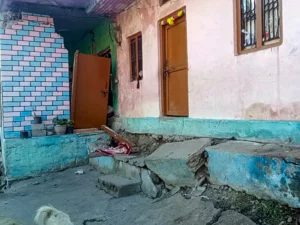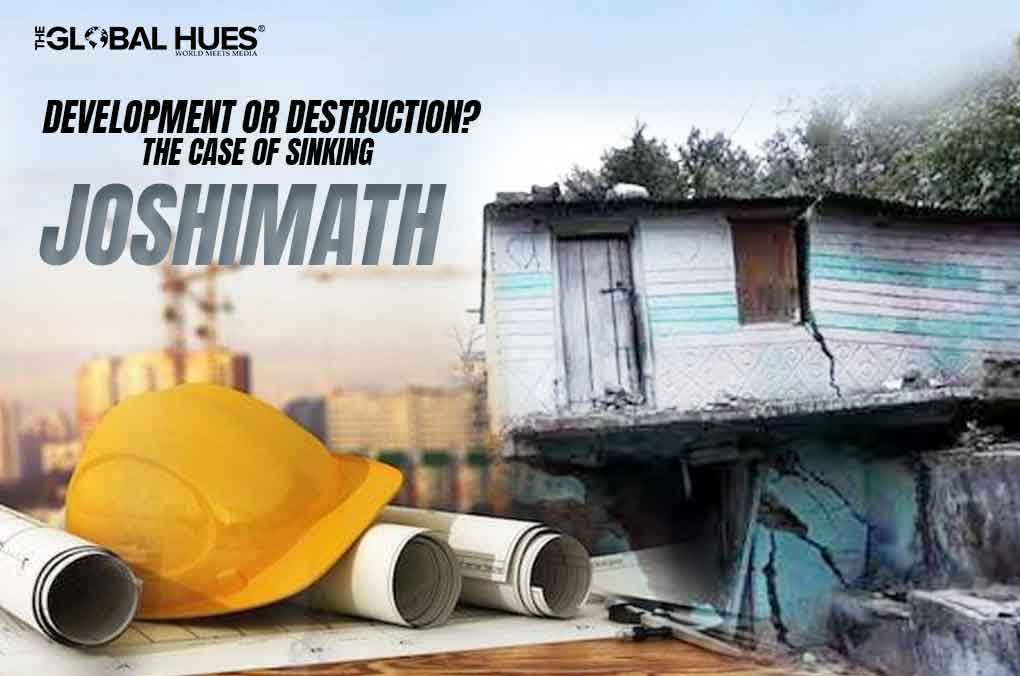Everyone wants better infrastructure, concrete roads, more jobs and overall development. But do we realise that in order to build all these for ourselves, we become so inward-looking that we forget to take care of the environment? The mainstream developmental policies by the government are exploiting our environment to such an extent that it is proving disastrous for us rather than giving benefits.
The Padma Bhushan Awardee, Anil Prakash Joshi who is a renowned environmentalist, believes, around 200 years ago the challenge for mankind was economic insecurity but right now it has changed into ecological insecurity. He also adds that development is a necessary process but it should go hand in hand with the environmental and ecological system. We can not sacrifice one for achieving the other. There should be a fine balance between both.
What we need to understand is that the amount of harm we are causing to our environment in the name of development is irreversible. And then neither the plantation drives nor celebrating World’s Environment Day is going to help us.
India is a developing country that is going through some big development projects that directly or indirectly impact the environment. But as we are walking forward on the path of becoming a developed nation, the incidents of natural disasters due to big projects cannot go unnoticed.
To understand better how our developmental projects are causing natural disasters, let us tell you about the recent case of Joshimath in Uttarakhand.
What Is Happening In Joshimath?
Recently, this hill town has become the talk of the town not because of its beautiful places or tourist destinations but because it is sinking. Yes, the land of Joshimath is sinking and big cracks can be seen in people’s homes, hotels, shops and almost every other place.
Joshimath is a hill town in Uttarakhand’s Chamoli district with a population of around 23,000 people. It is popularly known for being a beautiful town that attracts thousands of tourists every year. Joshimath is also famous because it is a gateway to several pilgrimage places including Badrinath, Hemkund Sahib and the Char Dham Yatra. Along with being a gateway to pilgrimages, Joshimath is located along the Indo-China border which makes it an even more politically important place.
The incident of visible cracks on the ground was not new for the local residents of Joshimath. Reports suggested that people are noticing cracks in their homes since February, last year (2022). But since the start of the year 2023, these cracks started widening to such an extent that people are compelled to leave their homes. According to official reports, over 500 houses developed cracks due to land subsidence due to which around 3000 residents are out in the bittering winter of January.

The sinking of the land and big crack in the homes are becoming a nightmare for the locals of Joshimath that may get worse. The government authorities are advising residents to evacuate their homes as soon as possible and go to someplace that is safer. Retaliating this official order, people are protesting against the authorities stating that they have no places to go and no such arrangements have been made by the government either.
ISRO (Indian Space Research Organisation) has made some shocking revelations about the sinking of Joshimath. The study by ISRO claims that the town witnessed a rapid sinking of 5.4 cm in just 12 days. Due to its weak foundation, it is possible that Joshimath may sink entirely.
Why Is It Happening?

The local residents are blaming the ongoing excavation work of the various high-scaled construction projects. These big projects include the Tapovan Vishnugad hydropower project and Char Dham Project. Not only residents but several geologists and environmental experts also believe that the tragedy of Joshimath is not natural, it is man-made.
The experts have constantly warned the authorities that the land of Joshimath cannot handle the load of such big construction projects and it may lead the entire town towards a severe disastrous event.
Many years back, the report by the government-appointed Mishra Commission clarifies that the land of Joshimath is located on an ancient landslide that makes it an environmentally fragile area. This town is also a high-risk seismic ‘Zone-V’ which means that Joshimath is more prone to landslides and earthquakes. Despite the geological vulnerability of the town, big hydroelectric schemes and construction projects are what destroy the town.
The other reason behind the sinking of Joshimath is the ill planning and construction of the town, believes experts. The inadequate drainage system and wastewater disposal system are making the problem even worse.
This is Not Just The Story Of Joshimath
The story of Joshimath is not the first one and certainly not the last either. Experts are of the opinion that the fate of Joshimath may be followed by some other towns and locations as well. The cities like Pauri, Uttarkashi, Tehri and Rudraprayag are also at greater risk. If such hydropower and construction projects are not regulated at the earliest, then the silent disaster of land sliding will destroy a lot of Himalayan regions.
Final Words
The sinking of land, flash floods, and frequent landslides are not natural disasters but are man-made. We are the ones who are inviting our destruction by exploiting our natural resources.
If you go by the reports of environmentalists and geologists then you will know how scary it is for the residents of Joshimath who are witnessing this all. Many believe that now it is too late to save Joshimath. The damages cannot be undone now. All we can do is that we take the lesson from this incident of Joshimath and save the other Himalayan regions from witnessing the same fate.



